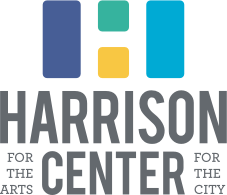Still Life*
Lower Right, acrylic on paper - in oak frame, 24x32 (framed)
Upper Left, acrylic on paper - in oak frame, 24x32 (framed)
Dutch Still Life - Sets, wood collage blocks, 4x4x4
Once upon a time, Pop Art was the future. Andy Warhol astounded the world with colorful depictions of popular culture, like Campbell soup cans or Marilyn Monroe’s face, while Roy Lichtenstein’s reproductions of pulp comic strips were hung in the world's premier galleries as symbols of a bizarre new world of advertisements, commercialism, and industry. But soon, like all movements, Pop Art came to an end. The world that inspired this work spins on, however, and in 2024 our culture is still surveying—just as wide-eyed—the rapid speed of industry steadily crescendoing from the very first moments of the Industrial Revolution. Consumption, it seems, has been launched forward at the speed of light, and with it, objects, objects everywhere.
Gigi Salij is an artist who has long been inspired by Pop Art, but she plants her work firmly in the here-and-now, embedded in the issues that keep the modern person up at night. Salij is based out of both Los Angeles and New York City; she splits her time between the two, working as an associate professor for The Art Center College of Design in Pasadena, California. For her newest exhibit at the Harrison Center (she has held many) Salij continues her practice of screen printing, sometimes contrasting recognizable symbols and motifs next to one another and, in the process, skewing their meanings and getting a “huh?’ out of the casual viewer.
Memento Mori with Mona Lisa, acrylic on paper - in walnut frame, 24x38 (framed)
Salij is a Harvard graduate, and it is fair to say that she approaches her art practice with an academic insight and sharp intelligence; it is also fair to say that the work itself is never too hard to grasp or too self-important. In fact, Salij’s muse is straightforward to a fault—she chooses simplicity when she can, printing Pink Pearl erasers on a white background, or decorating an ice cream sundae with a wreath of gold stars.
Pink Pearl, acrylic on paper - in white frame, 24x32 (framed)
Banana Split in Gold, acrylic on paper with vinyl details - in oak frame, 23x31 (framed)
There are many curious moments in Still Life. In fact, if you’re not paying attention, you may miss just how weird this show truly is, and weird is becoming increasingly powerful and a bit rare amongst our artists (call it the result of fatigue, perhaps, of media and news growing all the more absurd in a rapid-fire digital age) but much of what makes Still Life so odd is how direct it can be. A lemon twist is peeled in Lemon; A carton of Milk Duds is crushed in Milk Duds. I can’t help but think of Warhol’s manufacturing his infamous Brillo Boxes— “That’s it? That’s the art?” many viewers asked. Perhaps Warhol—and now, years later, Salij—was simply asking the viewer to look around and notice just how designed our world truly is. How many beautiful and strange designs surround us, unconsidered, like background noise? Still Life turns up the volume on our everyday lives like an old radio tuned to an empty channel—the white noise taking center stage.
Brillo Boxes, Andy Warhol
Dutch Still Life - Set A, wood collage blocks, 4x4x4
Still Life… is the name a double meaning? Does Salij mean that after all of this production, consumption, industry, and imagery, the stories that these symbols encompass are, in fact, still life? Or maybe she’s reminding us that life happens still, regardless of modernity regardless of our circumstances. With Salij, nuance is where the magic happens; it is where she holds space for the viewer to arrive at a variety of responses. After all, something like a tootsie roll wrapper is not a symbol that belongs to Salij—it belongs to the popular culture and, by extension, each one of us who has experienced it. We carry our own associations and memories to the work, and a tapestry of meaning emerges.
Pareidolia, acrylic on paper - in maple frame, 19x25 (framed)
Pop Art is no longer the future, but whatever Gigi Salij is doing feels like it is. It is said that one of the artists’ roles is to make the familiar strange. It is only in this alchemy that we can actually experience some sort of shift in our perspective after encountering a puzzling piece of artwork.
In Still Life’s case, It doesn’t hurt that, in the process, you also get candy.
The show can be viewed anytime during the month of March in the Gallery Annex during Gallery Hours: Monday – Friday from 9 a.m. - 5 p.m. The works can also be viewed and purchased on our online gallery through April.
Caleb John Smith is an artist and writer, living and working in Chicago, IL. He is the current Gallery Manager for The Art Center Highland Park and is proud to call the Harrison Center a home base.







